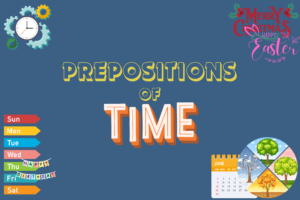Language learning is a fascinating journey that opens doors to new cultures, connections, and opportunities. Yet, many myths and misconceptions surround the process of acquiring a new language. These misconceptions often discourage potential language learners or lead to unrealistic expectations. Let’s unravel some of the most common myths about language learning and shed light on the reality of mastering a new tongue.
Myth 1: “You’re Too Old to Learn a New Language”
Age is just a number when it comes to learning a new language. While it’s true that children tend to pick up languages more easily, adults have several advantages, such as prior language experience and developed cognitive skills. With dedication and the right methods, adults can become proficient language learners.
Myth 2: “You Need to Be Fluent to Communicate”
Fluency is a noble goal, but it’s not the only measure of successful language learning. You can have meaningful conversations with a basic vocabulary and grammar foundation. Effective communication is about understanding and being understood, not about perfect grammar or accent.
Myth 3: “Language Learning Is Only for Geniuses”
Language learning isn’t reserved for the intellectual elite. Anyone can learn a new language with determination and consistent effort. It’s not about being a genius; it’s about setting realistic goals, staying motivated, and practicing regularly.
Myth 4: “Traveling to a Country Is the Only Way to Learn”
While immersion can be beneficial, it’s not the only path to language proficiency. In today’s digital age, you can access language resources, online courses, and native speakers without leaving your home. Virtual immersion is a powerful tool for language learners.
Myth 5: “It Takes Years to Learn a Language”
The time it takes to learn a language varies greatly depending on factors like the language’s complexity, your previous language experience, and the amount of time you dedicate to learning. You can achieve conversational fluency in several months with focused practice.
Myth 6: “You Need to Speak Perfectly”
Perfectionism can be a significant roadblock in language learning. Remember that making mistakes is a natural part of the process. Native speakers appreciate your effort to communicate in their language, even if you’re not flawless.
Myth 7: “Learning a Language Is Expensive”
Language learning doesn’t have to break the bank. There are numerous free or affordable resources available, from language apps and online courses to language exchange partners. You can tailor your language learning journey to your budget.
Myth 8: “You Don’t Need Grammar”
While communication is essential, understanding grammar is crucial for clear and effective expression. You don’t need to be a grammar expert, but a solid grasp of basic grammar rules will significantly improve your language skills.
Myth 9: “You Can’t Learn Multiple Languages Simultaneously”
Contrary to popular belief, learning multiple languages simultaneously is possible, especially if you manage your time wisely and maintain a clear focus on each language. However, it’s essential to be aware of your limitations and not overwhelm yourself.
Myth 10: “It’s All About Memorization”
Language learning isn’t just about memorizing vocabulary and phrases. Contextual understanding, practical application, and cultural immersion play equally vital roles. Language learning is a dynamic process that goes beyond rote memorization.
In conclusion, language learning is a rewarding journey that anyone can embark on with the right mindset and approach. Dispelling these myths can help you embrace the challenges and joys of learning a new language. Remember, the most crucial ingredient in language learning is your determination and dedication. So, go ahead, pick up that language you’ve always wanted to learn, and enjoy the enriching experience it brings to your life.






